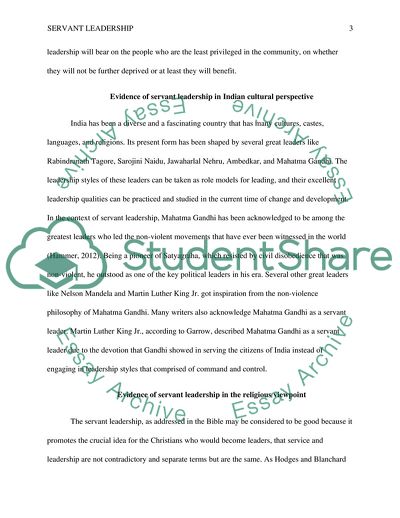Cite this document
(Servant Leadership: the Promotion of a Sense of Community Essay Example | Topics and Well Written Essays - 1500 words, n.d.)
Servant Leadership: the Promotion of a Sense of Community Essay Example | Topics and Well Written Essays - 1500 words. https://studentshare.org/religion-and-theology/1877926-servant-leadership-in-diverse-contexts
Servant Leadership: the Promotion of a Sense of Community Essay Example | Topics and Well Written Essays - 1500 words. https://studentshare.org/religion-and-theology/1877926-servant-leadership-in-diverse-contexts
(Servant Leadership: The Promotion of a Sense of Community Essay Example | Topics and Well Written Essays - 1500 Words)
Servant Leadership: The Promotion of a Sense of Community Essay Example | Topics and Well Written Essays - 1500 Words. https://studentshare.org/religion-and-theology/1877926-servant-leadership-in-diverse-contexts.
Servant Leadership: The Promotion of a Sense of Community Essay Example | Topics and Well Written Essays - 1500 Words. https://studentshare.org/religion-and-theology/1877926-servant-leadership-in-diverse-contexts.
“Servant Leadership: The Promotion of a Sense of Community Essay Example | Topics and Well Written Essays - 1500 Words”. https://studentshare.org/religion-and-theology/1877926-servant-leadership-in-diverse-contexts.


